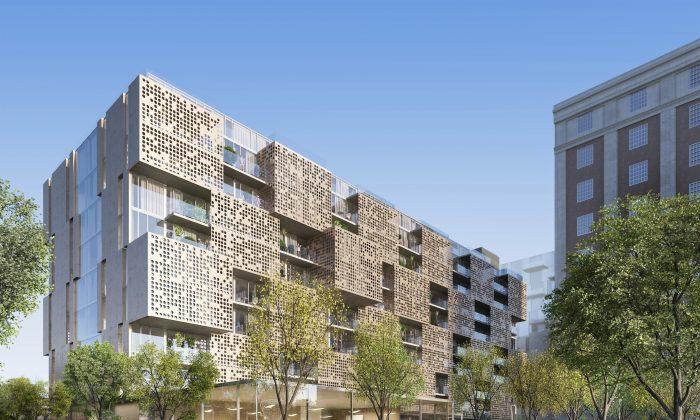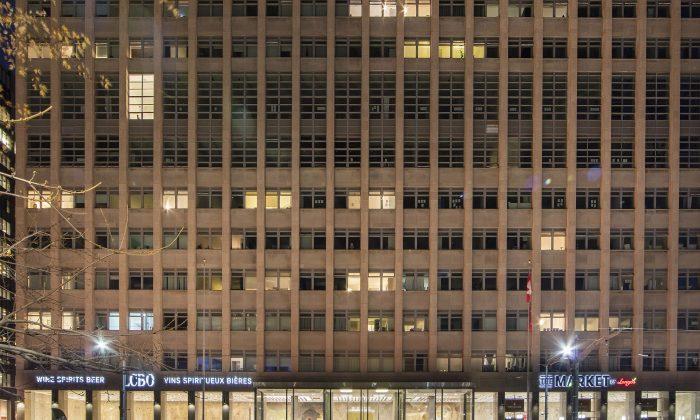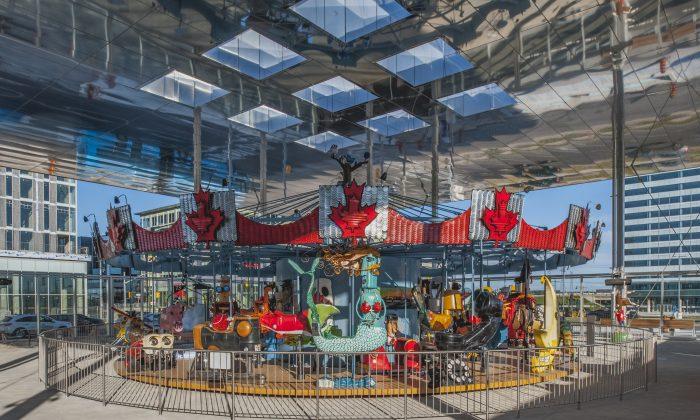Toronto’s Junction Triangle is in the middle of dramatic, sweeping changes and the new Museum Flats condominium project is leading the way.
Imagine a village with artists, galleries, restaurants, boutiques, dentists, and doctors all just a hop away from the city centre.
Throw in plenty of transportation, entertainment, and schools—along with the new home for Canada’s Museum for Contemporary Art—and you have the flower that’s blossoming north of Dundas St. W. on Sterling Rd.
The area, popularly known as the Lower Junction, has slowly grown into a quiet mecca of creativity, discovery, and learning. As part of a massive revitalization plan, it will also become one of the most vibrant neighbourhoods in the city.
Museum Flats, developed by Castlepoint Numa Inc. and designed by Architects Alliance, is a planned 10-storey building at 213 Sterling Rd. that will feature over 150 condominiums that have been meticulously designed to capture the essence of city living while providing all the amenities for active family lifestyles.
And although Museum Flats is an important building block in the project, it’s just one of many.
Castlepoint Numa has been busy spearheading the revitalization of an eight-acre site straddling Sterling Rd. and Perth Ave. which will eventually see it as one of the top mixed use communities in Toronto.
Strategically integrated commercial space will attract new and expanding businesses and the lower junction will boast 2,500 new jobs and 1,000 new residents in seven new buildings that will include 564,000 sq. ft. of mixed use space and 540,000 sq. ft. of residential.
Scott Davie, vice-president at Milbourne Real Estate Inc. and broker for Museum Flats, says the area will be filled with independent shops, art galleries, creative offices, and even food vendors.

He also stressed that it’s a neighbourhood where value is “quickly rising” so potential buyers should act fast. The project will soon break ground and sales are already underway.
“This is going to be a vibrant community with plenty of people, plenty of families, and just so much to do,” Davie says “There are about 20 art galleries just within walking distance and when this project completes there will be a lot more.”
Museum Flats will also include a ground floor city-run daycare.
Transportation, Green Space

Alfredo Romano, a principal at Castlepoint Numa, says the area is already plugged into the surrounding infrastructure and that—unlike many other spots in the city—it has its own transportation hub with two nearby subway stops (Dundas St. W. and Lansdowne Ave.), two streetcar routes, the Bloor GO Train station, and access to the Union-Pearson Express train link, which connects the airport and Union station as well as safe cycling routes.
Close access to the Gardiner Expressway makes it easy to get on any of the 400 series highways in and around the Greater Toronto Area.
“Transportation is just so important when deciding where to live,” says Romano. “It’s important if you work or have a family ... but it’s also an important investment factor. This hub will really keep the value of this area way up.”
Drawing inspiration from the industrial and artistic character of the neighbourhood, Museum Flats will feature a strikingly articulated facade that will house a collection of commercial spaces as well as the residences.
Designed by architect Peter Cewes of Architects Alliance, a public park and plaza will provide both a passive and active green space. The building’s eye-catching exterior—with swaths of “pixilated” privacy barriers—is destined to become a new Toronto icon.
Each unit features interiors designed by the boutique firm AOD with private and spacious outdoor rooms as well as balconies.
The units include everything from bachelors all the way to three bedrooms and two baths, with prices ranging from $269,000 to $559,000. Size ranges from 534 sq. ft. to 1044 sq. ft.
Buyers can expect nine foot ceilings, glass balconies, designer cabinets, designer countertops, a stainless steel appliance package, private outdoor rooms off the master bedroom, stone bathroom countertops, an outdoor room with perforated screen, dining island with seating and storage, as well as a state of the art gym with yoga studio and views.
The project’s rooftop will be a special place with an expansive outdoor terrace featuring private pergolas and barbecues, sculpture installations, and gardening plots.
“This will be a real people place,” says Romano. “We'll have music practice rooms, a teen lounge and library with a large flat screen, and ping pong tables.”
He also says the project includes open deck spaces for outdoor entertaining activities, teaching kitchens, and cooking classes, a bar room for entertaining, and a large dining space.
Focal Point
The focal point for the entire project will be the old Tower Automotive Building, now simply called the Auto Building and new home for the Museum of Contemporary Art (MOCA).
Located at 158 Sterling Rd. (adjacent to Museum Flats) and built in 1919, the old factory, which is being restored by Brookfield Multiplex, is a perfect spot for the museum which will move from its current Queen St. W. location when it opens in May of next year.
MOCA will inhabit the first five floors of the building, creating an infusion of art and culture with a rich historical backdrop. Office and studio space will become home to an assortment of businesses. Commercial space will also be available to artists and businesses native to the Junction Triangle.
Principals of MOCA say the museum will “endeavour to be a museum for the 21st century, a place to explore new types of programming and collecting, and a way of working with different publics and diversity.”
And the facility won’t be alone.
Operating right now in the middle of the project at 213 Sterling Rd. is the popular Junction Gallery. The space has hosted internationally acclaimed artists such as Kent Monkman and Kim Dorland. Whether designing a pop-up show, permanent gallery, or private collection, curator Ray McAuliffe produces unique experiences that do not adhere to a standard disposition.
For those who love to dine out, the nearby Branca Restaurant at 1727 Dundas St. W. has a charming and inviting ambience, and its wood-fired Argentinean fare draws culinary aficionados from all over the city.
Some of the best espresso in Toronto is served at the Belljar Cafe at 2072 Dundas St. W. A treasure to the community, this rustic cafe turns into a hub for live music often featuring renowned musician Daniel Lanois.
Other nearby attractions include Exhibition Place with its calendar of events; BMO field, home of The Toronto Argonauts and Toronto FC soccer; and nearby High Park with its playgrounds, sporting facilities, and zoo.
Most area residents find that their shopping needs are met by the stores and services offered by Dufferin Mall.
For more information and to register, visit: museumflts.ca.
Paul Irish is a Toronto-based freelance journalist





Friends Read Free